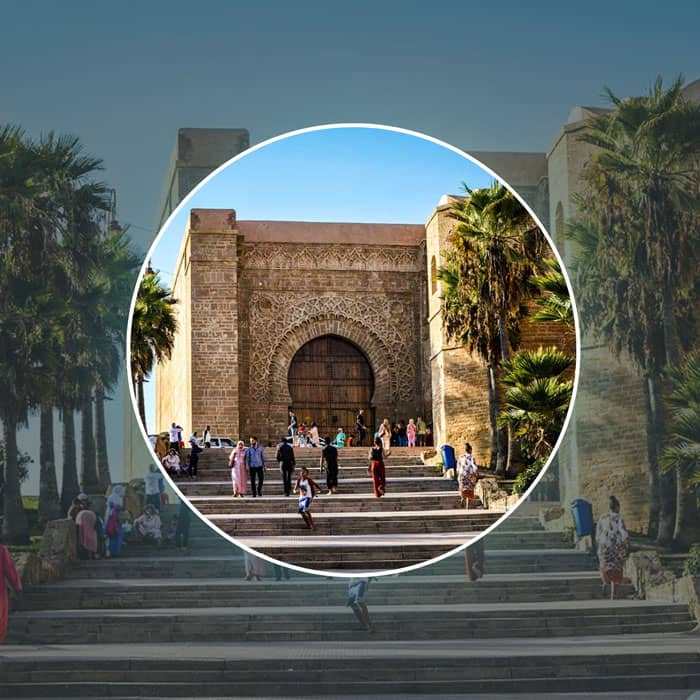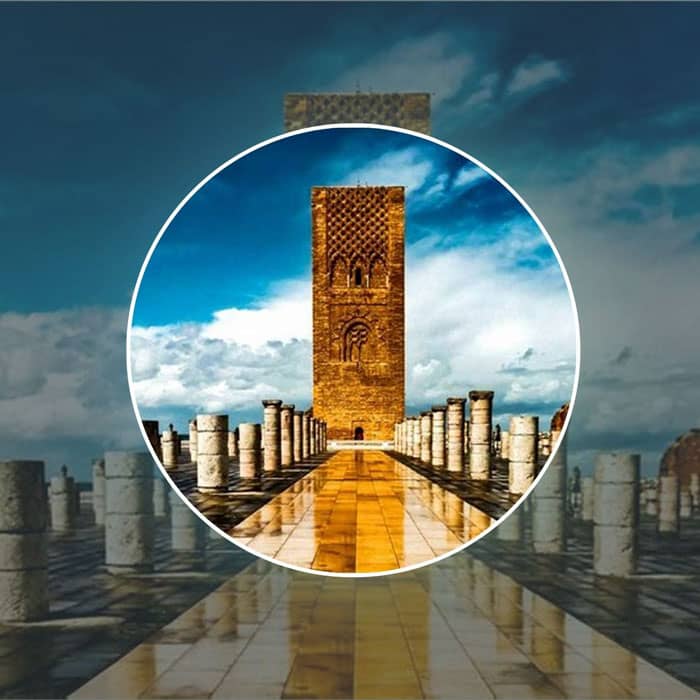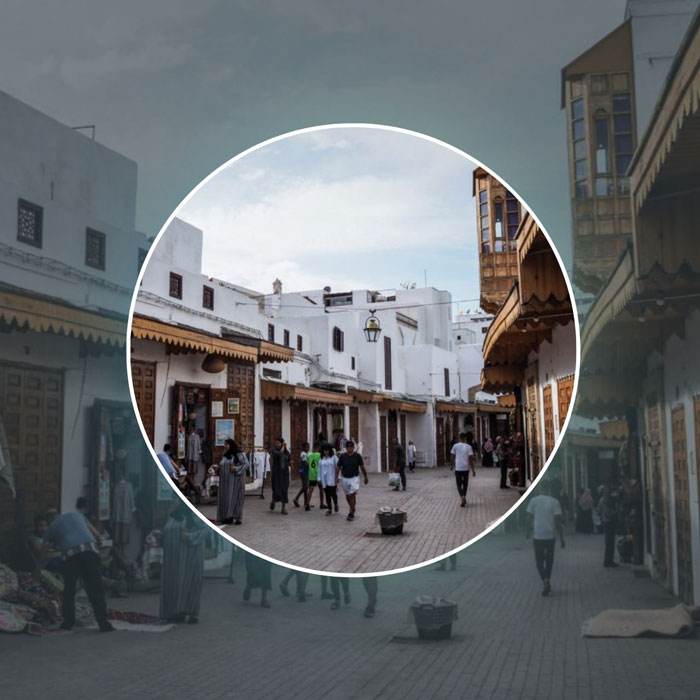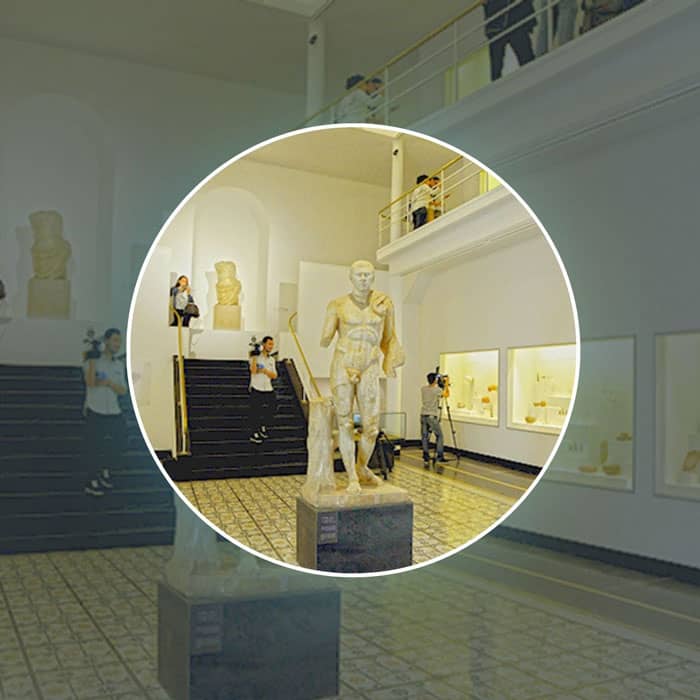
Discovering Rabat’s UNESCO World Heritage Sites: A Journey Through History
Rabat, the capital of Morocco, is a city steeped in history and culture. Designated as a UNESCO World Heritage Site in 2012, the city is a fascinating blend of ancient landmarks and modern urban planning. It offers visitors a chance to explore its rich historical tapestry while enjoying its vibrant contemporary vibe. Let’s delve into Rabat’s UNESCO World Heritage Sites and uncover the stories they tell.
List of Rabat’s UNESCO Heritage Sites
1. Kasbah of the Udayas
Perched at the mouth of the Bou Regreg River, the Kasbah of the Udayas is one of Rabat’s most iconic landmarks. This fortified citadel dates back to the 12th century during the reign of the Almohad dynasty. It served as a military base and a defensive stronghold.
Wander through the kasbah’s narrow, winding streets adorned with white-and-blue painted houses that exude a serene Mediterranean charm. The Andalusian Garden, located within the kasbah, is a tranquil haven filled with orange trees, flowers, and fountains. From the kasbah’s terrace, visitors are treated to stunning views of the Atlantic Ocean and the neighboring city of Salé.

2. Hassan Tower and Mohammed V Mausoleum
The Hassan Tower is an unfinished minaret of a grand mosque envisioned by Sultan Yacoub al-Mansour in the 12th century. Had it been completed, it would have been one of the largest mosques in the world. Despite its incomplete state, the tower’s intricate designs and red sandstone structure make it a striking monument.
Adjacent to the tower is the Mohammed V Mausoleum, a masterpiece of modern Moroccan architecture. This mausoleum is the final resting place of King Mohammed V and his two sons, King Hassan II and Prince Moulay Abdallah. The exquisite white marble structure, adorned with zellij (Moroccan mosaic) and traditional carvings, showcases Morocco’s rich artisanal heritage. Visitors are welcome to view the mausoleum’s ornate interior, which includes a beautifully crafted dome and chandeliers.

3. Chellah Necropolis
Located on the outskirts of Rabat, the Chellah is an ancient Roman and medieval Islamic site. Originally established as a Roman settlement in the 2nd century AD, it later became a necropolis during the Marinid dynasty in the 14th century.
The site is a blend of Roman ruins and Islamic architecture, featuring remnants of a forum, baths, and a mosque. Chellah is also known for its lush gardens, where storks often nest, adding to the mystical atmosphere. The tranquil setting and historical significance make it a must-visit destination for history enthusiasts.

4. Medina of Rabat
Rabat’s medina, or old city, is a living testament to its rich history and cultural heritage. Unlike other Moroccan medinas, Rabat’s is more orderly, reflecting its reconstruction during the 17th century by Andalusian refugees.
As you wander through its bustling streets, you’ll encounter vibrant souks (markets) offering a variety of goods, from traditional crafts and textiles to spices and fresh produce. Key landmarks within the medina include the Mellah (Jewish quarter) and the Grand Mosque, both of which reflect the city’s diverse cultural influences.

Your Morocco Adventure Start in Rabat!
Reserve your tour, day trip, or a special activity. If you would like to customize your trip or have an idea feel free to contact us, via any platform you prefer.
5. Modern Urban Development and the Royal Palace
Rabat’s UNESCO designation also recognizes its modern urban development, which harmoniously integrates with its historic sites. The city’s 20th-century planning under the French Protectorate introduced wide boulevards, gardens, and administrative buildings, creating a unique blend of European and Moroccan styles.
The Royal Palace, Dar al-Makhzen, is a prime example of this integration. Although the palace itself is not open to the public, visitors can admire its grand architecture and the beautifully landscaped Mechouar (courtyard) surrounding it.

6. Archaeological Significance
Rabat’s historical layers make it an archaeologist’s dream. The city’s inclusion on the UNESCO list highlights its role as a crossroads of civilizations, from Phoenicians and Romans to Islamic dynasties. Each era has left its mark, contributing to Rabat’s rich cultural mosaic.

Tips for Visiting Rabat’s UNESCO Sites
- Time of Year: The best times to visit Rabat are spring (March to May) and autumn (September to November) when the weather is mild and pleasant.
- Guided Tours: Consider hiring a local guide to gain deeper insights into the history and significance of each site.
- Cultural Etiquette: Dress modestly and respect local customs, especially when visiting religious sites.
- Photography: While photography is generally allowed, be mindful of restricted areas and always ask for permission when photographing people.
Conclusion
Rabat’s UNESCO World Heritage Sites offer a captivating journey through time, showcasing the city’s rich history and cultural diversity. From the ancient walls of the Kasbah of the Udayas to the modern elegance of the Mohammed V Mausoleum, Rabat seamlessly blends the old and the new, making it a must-visit destination for travelers seeking a deeper understanding of Morocco’s heritage.
